Menus
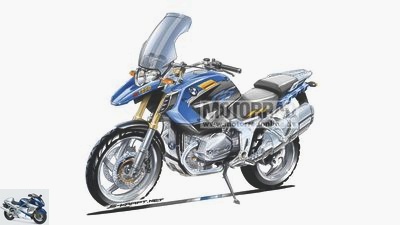
Drawing: Stefan Kraft

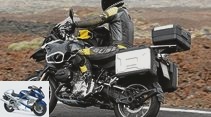

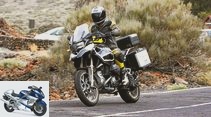
14th photos
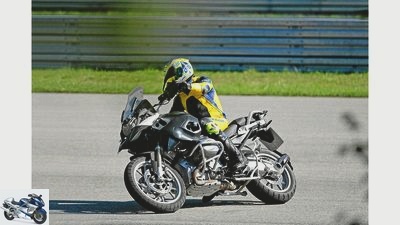
Scorn
1/14
BMW R 1250 GS LC: After Triumph presented the Tiger Explorer and Honda presented the Crosstourer, the first BMW with a water-cooled boxer will be presented at the Intermot in Cologne in October.
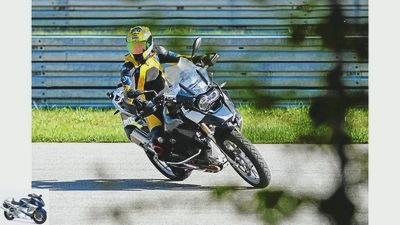
Scorn
2/14
BMW R 1250 GS LC.
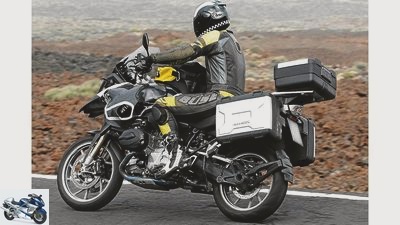
Scorn
3/14
BMW R 1250 GS LC: You can hardly see the water jacket of the engine.
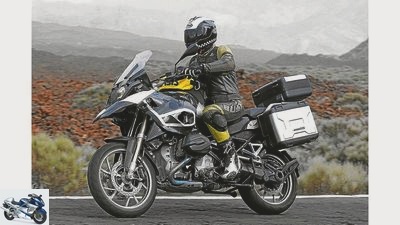
Scorn
4/14
BMW R 1250 GS LC: Two radiators crouch under the fairing.
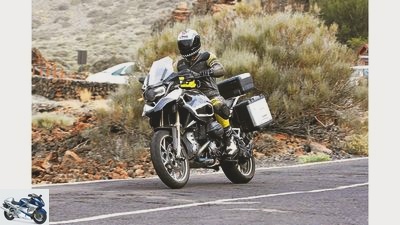
Scorn
5/14
BMW R 1250 GS LC: adjustable screen, LED daytime running lights, sporty styled under the camouflage.

6/14
An almost normal GS Adventure on a Spanish motorway. But why is the swing arm on the wrong side? For the Spanish colleagues from “Solo Motor" is clear. Here is a prototype with a water boxer.
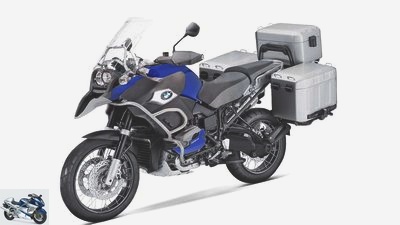
7/14
Computer retoucher Guerin places the water cooler in front of the engine. That could work because the Telelever pushes the front wheel forward during compression.
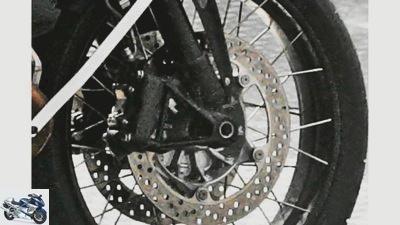
Horner
8/14
BMW R 1250 GS LC – Brake: The next GS generation now has four-piston brake calipers attached radially at the front.
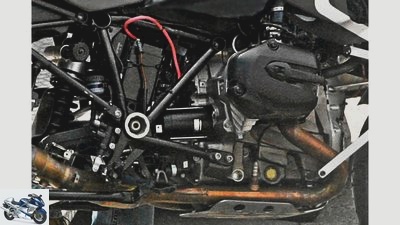
Horner
9/14
BMW R 1250 GS LC: The mighty water-encased head and cylinder is now flowed through vertically.
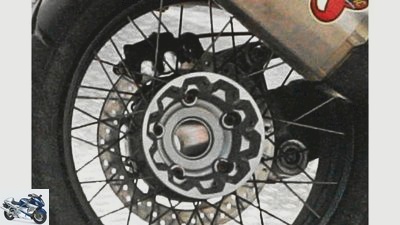
Horner
10/14
BMW R 1250 GS LC – Change of side: As with the K models, the swing arm with integrated cardan drive is now on the left.

Horner
11/14
The BMW R 1250 GS LC was first caught unloading.
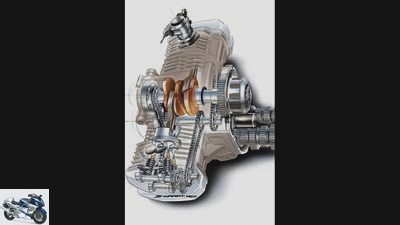
S-Kraft.net
12/14
BMW R 1250 GS LC: The MOTORRAD drawing by Stefan Kraft from issue 9/2011 was largely correct. Two overhead camshafts per cylinder, wet clutch over the gearbox, only one common housing for the entire drive unit.
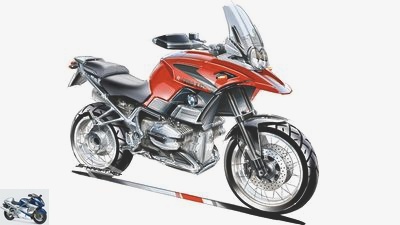
S-Kraft.net
13/14
BMW R 1250 GS LC.
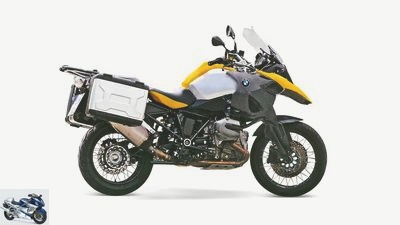
Scorn
14/14
BMW R 1250 GS LC – The first snapshot of the new generation of boxers shows that no stone is left unturned.
Design BMW R 1250 GS
GS with double cam
The new BMW GS will be presented at the end of 2010. MOTORRAD is already daring to look ahead and can rely on a few facts. A boxer engine with double-cam cylinder heads is considered safe.
D.he BMW HP2 Sport is not just a sporty, elegant motorcycle. It looks like a window into the future of the boxer engine. In order to achieve its power of 133 hp and, above all, the necessary speeds, it was given cylinder heads with two overhead camshafts, which each operate four radially arranged valves via rocker arms. A lighter, more speed-stable and, because of the possible efficient cam profiles, also more powerful than the current solution, each with a high-lying camshaft, short push rods and rocker arms. The BMW engineers never left any doubt that this mechanical gem would not be reserved for an exclusive model. Their elaborately CNC-milled inlet section would, however, be too expensive for the production of larger quantities, so it was heard. But even with raw ducts and smaller cross-sections for more torque in the lower and medium speed range, the dohc head can give the boxer a powerful boost in performance. Over 120 PS with good exhaust quality and homogeneous power delivery – that’s how MOTORRAD values it.
Buy complete article
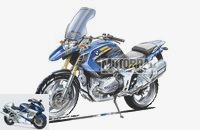
Design BMW R 1250 GS
GS with double cam
BMW R 1250 GS with probably 1228 cm³ displacement
Exactly the performance that a future GS may need in view of the approaching competition from Yamaha. The R 1200 S (122 hp) already has this limit with the "old" Cylinder head exceeded, but at the expense of a questionable characteristic: Downstairs it went listless, then the performance began comparatively violently. Not the right thing for the GS. As far as displacement is concerned, the four-valve boxers have so far increased from generation to generation – actually by 45 or 40 cm3, respectively by 50 cm3. It is therefore likely that future boxer models, whose pilot motorcycle will of course be the GS, will be called the R 1250, although not all BMW technicians are convinced of the increase in displacement. The future exhaust gas regulations are more and more difficult to create with larger individual cubic capacities, especially with larger bores due to the extension of the flame paths, explained a skeptic. He will probably have to bow to the requirements of marketing on this question.
Artist
Numerous divergent lines cause some unrest in some parts of the current GS.
In addition, the dohc cylinder head is distinguished not only by the better valve train, but also by a more favorable combustion chamber shape, thanks to the radially arranged valves, which promotes the rapid burning of the mixture. 2.5 millimeters more drilling, i.e. 103.5 millimeters, is possible under these conditions.
Ducati has long been operating with the 104 and the 1098 R and 1198 models with 106 pistons, the engines of the Harley V-Rod models measure 105 millimeters, just as much as the V2 of the KTM RC8 R. Morini dares even 107 Millimeter hole. Because the blank of the boxer crankshaft does not allow the stroke to be increased, it will probably remain at 73 millimeters. With a 103.5 millimeter bore, this results in a displacement of 1228 cm3. It is rather unlikely that BMW will design a new crankshaft. The current one has even proven itself in armed engines at 24-hour races, and a new one would be expensive. This would run counter to the iron law that stands above the K 35 project – according to the presumed code of the BMW R 1250 GS development: The new one must be much cheaper to produce than its predecessor. A truism, of course, but one that has been confirmed and emphasized by a BMW insider.
Big design changes unlikely
This announcement leads to the question of where production costs can be saved on the BMW R 1250 GS without reducing the processing quality. In spite of all the cost pressure, BMW could not allow itself to do that with the largest sales generator in the model range. One possibility is offered by modern die casting technology, as used by Japanese manufacturers. The photo of the rear frame of a Honda CBR 600 RR shown above shows the complex constructions that are possible with this process; A frame made of such profiles could replace the previous tubular structure of the Boxer BMW with the many welded joints of cast, sheet metal and pipe parts. The GS alone is produced in such large numbers that the molds would be profitable. With each additional R model, the investment pays for itself even faster. In addition, there is the option of having the frame cast in China, as is already the case with the bikes of the current GS.
For the rear frame, which is often heavily loaded with a pillion passenger and large luggage, BMW should stick to a tubular steel construction in favor of travel suitability. It is tougher, more elastic and easy to weld if it breaks. Major changes to the design of the BMW R 1250 GS are not expected. She has such an outstanding rank that her outward appearance is better looked after only with care. Stefan Kraft, the creator of the MOTORRAD design, has slightly retouched the headlight arrangement and the duckbill and optically tidied up the area around the tank and airbox by allowing the lines to run in only two main directions. The yellow part behind the BMW logo is used to quickly attach a tank bag. Kraft also cleverly uses the flatness of the aluminum profiles to hide the technology, which in some places in the tubular space frame of the current model is jagged and unsorted.
Related articles
-
BMW R 1250 GS Adventure in the driving report
BMW 31 photos BMW 1/31 The BMW R 1250 GS Adventure celebrated its premiere at the EICMA. MOTORRAD was already able to ride the Adventure GS. BMW 2/31 On…
-
New items 2019 Top topic Photo: Jorg Kunstle 35 photos BMW 1/35 The new BMW R 1250 R was presented at EICMA 2018 in Milan. BMW 2/35 BMW has given the…
-
Driving report BMW R 1250 GS 2019
Innovations 2019 Top topic BMW 32 Pictures BMW 1/32 With the first video, BMW also unveils the new GS. BMW 2/32 First look into the new cockpit. BMW 3/32 The …
-
BMW R 1250 RS against Kawasaki Z 1000 SX in a comparison test
Tyson Jopson 16 photos Tyson Jopson 1/16 Who makes the race in the comparison of the BMW R 1250 RS against the Kawasaki Z 1000 SX? Tyson Jopson 2/16…
-
New items 2019 Top topic BMW 32 photos BMW 1/32 BMW presents the new travel boxer R 1250 RT at the Intermot in Cologne. BMW 2/32 The concept of the…
-
Jacek Bilski 24 photos Jacek Bilski 1/24 In the new R 1250 GS, variable valve control via switching cam ensures more torque, power and smoothness. Jacek…
-
Test: Triumph Sprint GT against Suzuki GSX 1250 FA
Gargolov Test: Triumph Sprint GT against Suzuki GSX 1250 FA England versus Japan: sports tourers in the comparison test The Triumph family is growing….
-
CF Moto 1250 TR-G with KTM-1,279 cm³-V2: 2021 for the Chinese market
New items for 2021 Motorcycle innovations 2021 CF Moto 17th photos CF Moto 1/17 The CF Moto 1250 TR-G will be presented in Chongqing at the China…
-
Honda Forza 125: design fine-tuning and equipment pluses
New items for 2021 Motorcycle innovations 2021 Honda 12th photos Honda 1/12 Honda has revised the Forza 125 for the 2021 model year. Honda 2/12 Changes…
-
BMW R 1250 GS in long-term test: 100,000 test kilometers
Louis 7th photos Tobias Wassermann 1/7 MOTORRAD has a new long-term test motorcycle. Tobias Wassermann 2/7 The new BMW R1250 GS is a new addition. Tobias…